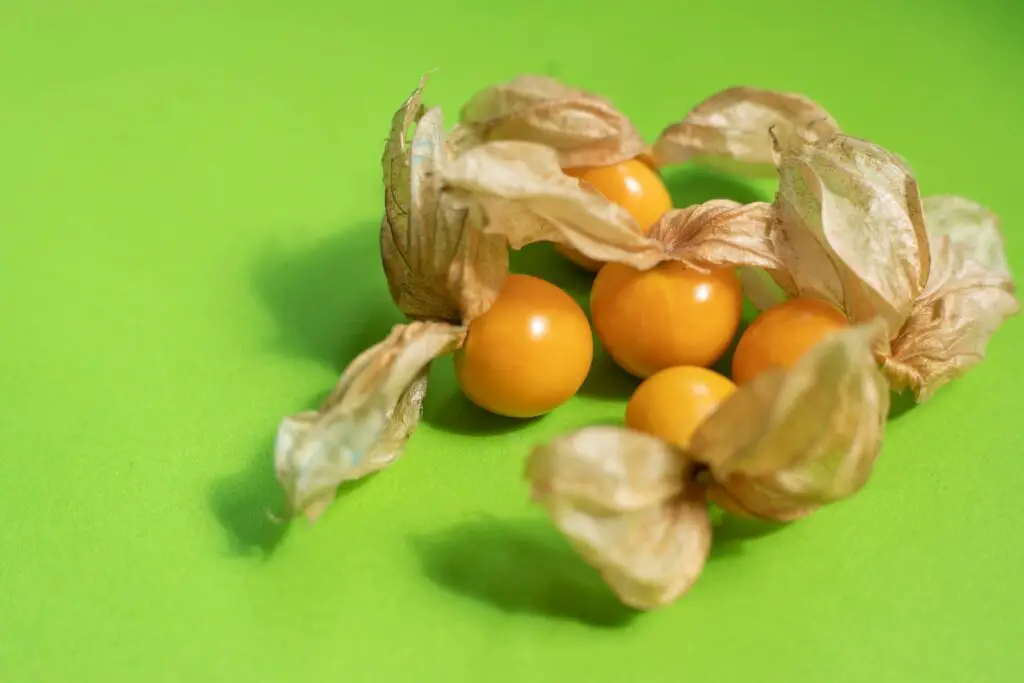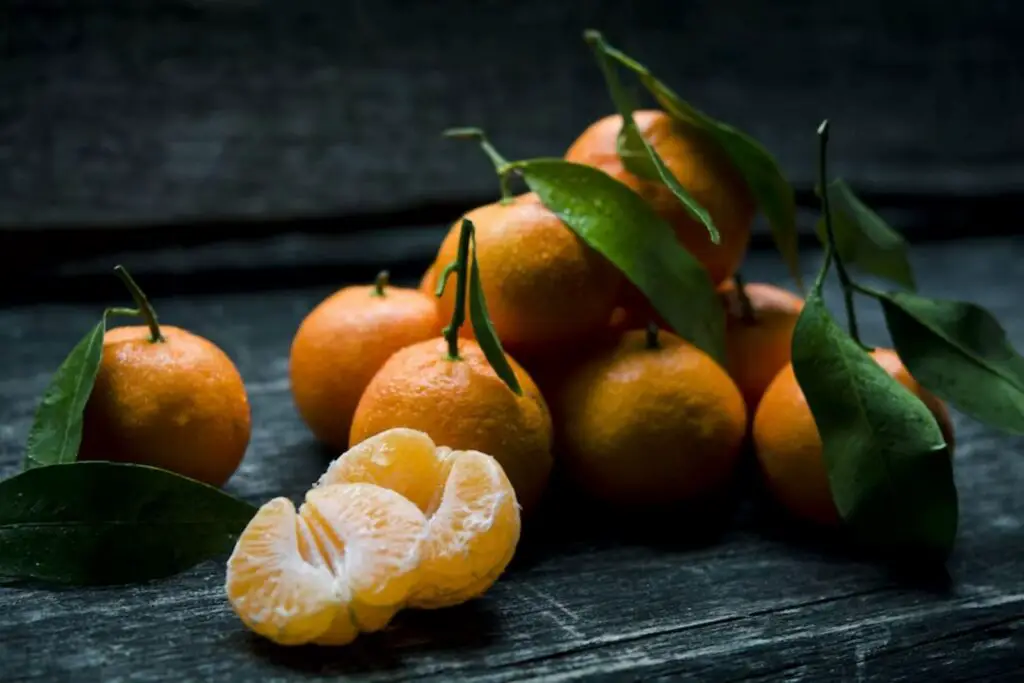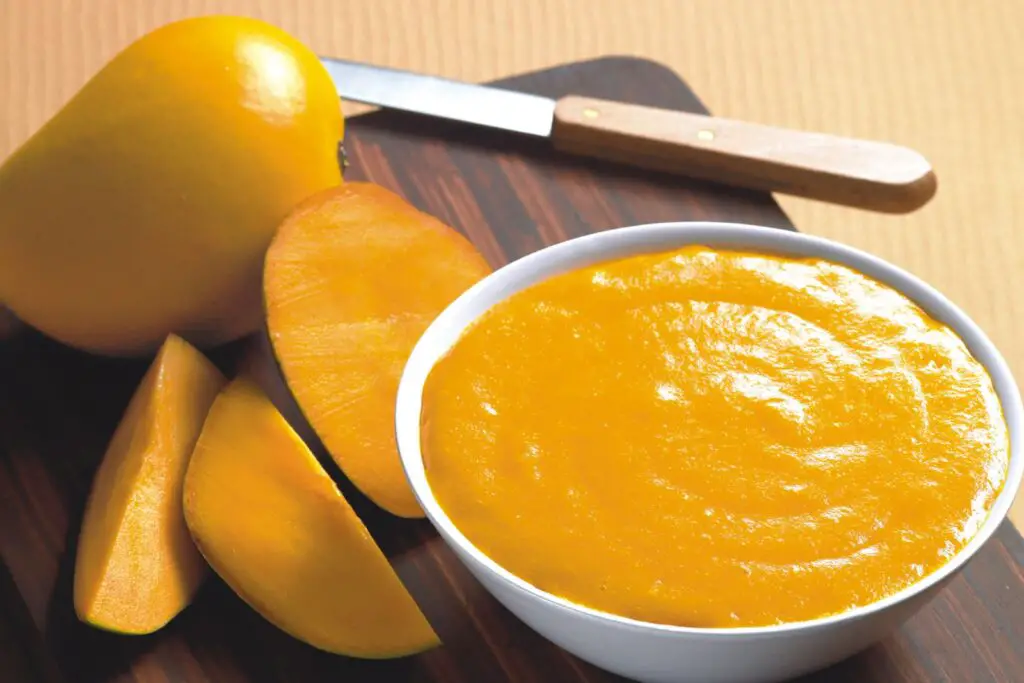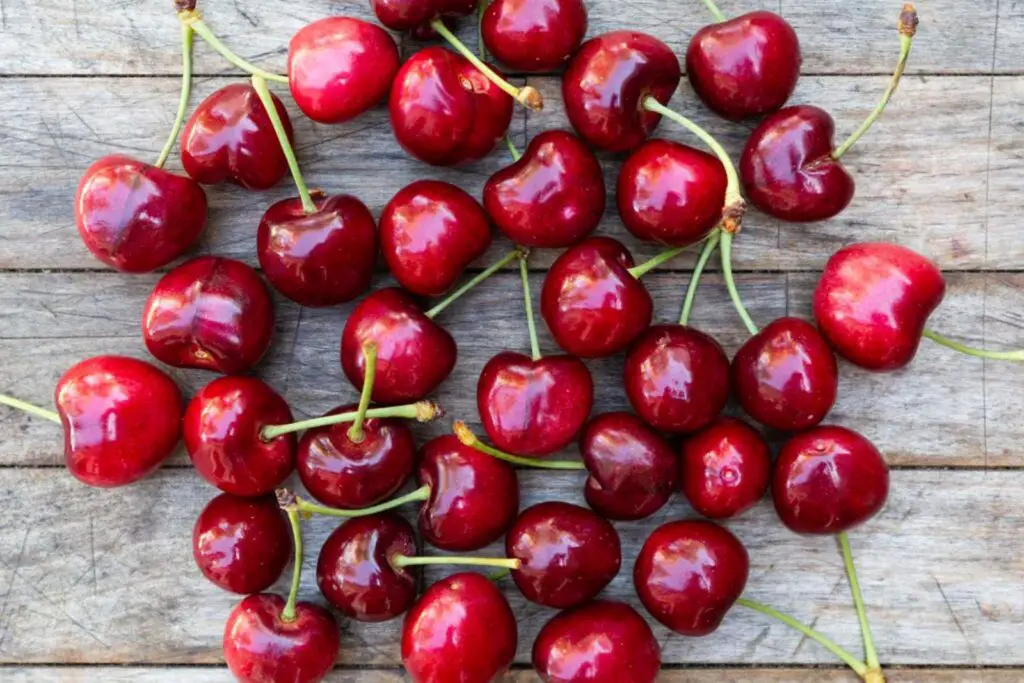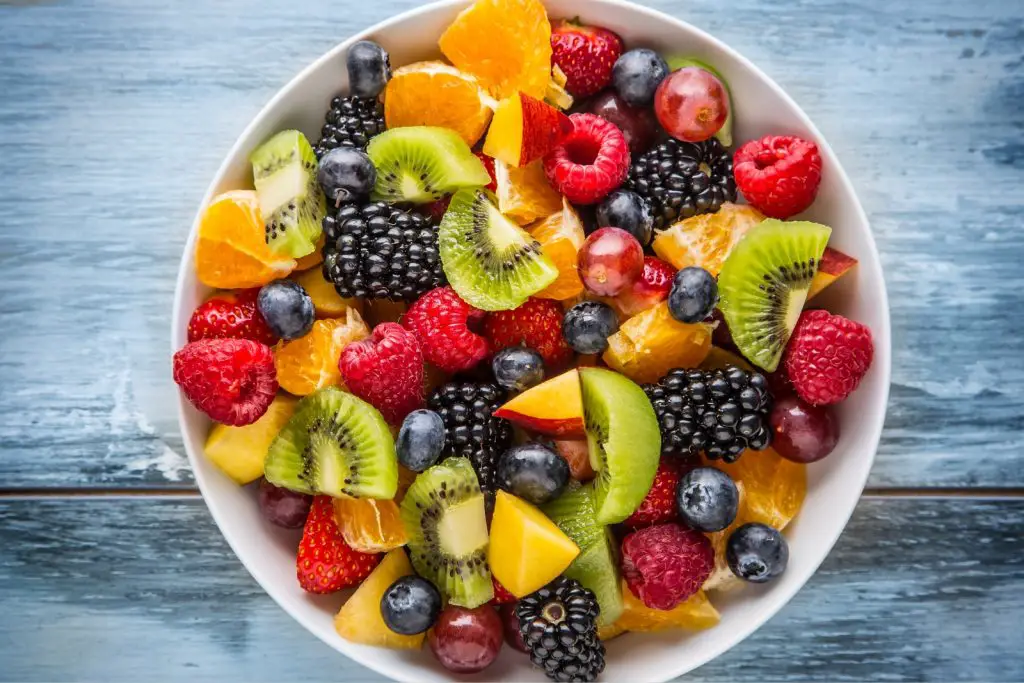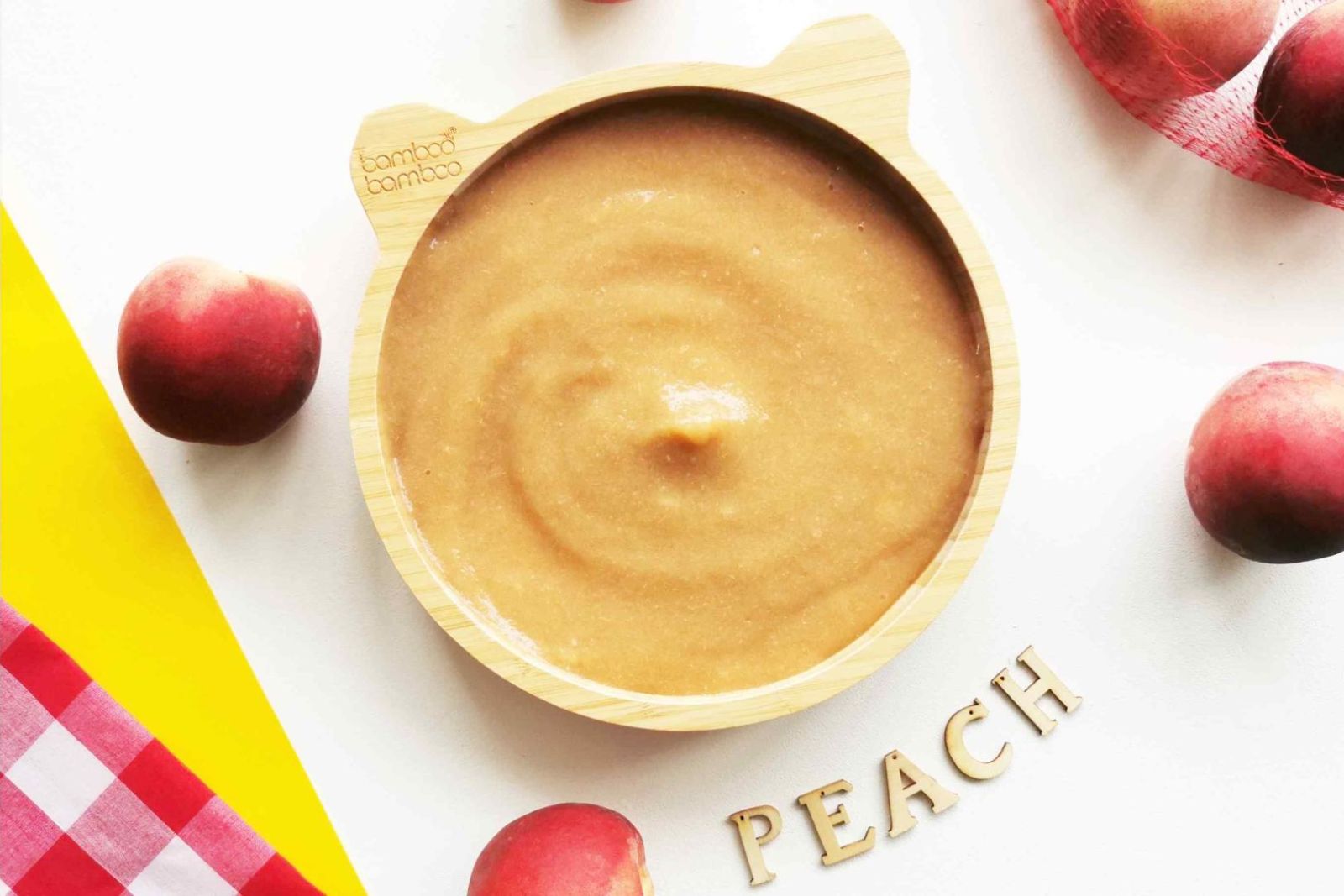
Peach puree is a delightful and versatile fruit puree that captures the sweet and juicy essence of fresh peaches. Whether you have an abundant harvest of peaches from your backyard orchard or found a great deal on these delectable fruits at the farmers’ market, freezing peach puree is an excellent way to preserve their flavors for later use. The smooth and luscious texture of peach puree makes it a perfect addition to various recipes, including smoothies, desserts, and sauces. By following a few simple steps, you can ensure that your peach puree remains in top-notch condition even during the off-season. In this article, we present a comprehensive guide on freezing peach puree to help you savor the taste of summer all year round.
Here’s a step-by-step guide on how to freeze peach puree:
- Step 1: Select ripe and flavorful peaches
- Step 2: Wash and prepare the peaches
- Step 3: Peel and pit the peaches
- Step 4: Blend the peaches into puree
- Step 5: Prepare for freezing
- Step 6: Portion the peach puree
- Step 7: Seal and label the containers
- Step 8: Freeze the peach puree
- Step 9: Thaw and use the peach puree
Step 1: Select ripe and flavorful peaches
Selecting ripe and flavorful peaches is essential for creating the best peach puree. When you choose ripe peaches, you ensure that the natural sweetness and juiciness of the fruit are at their peak, resulting in a more vibrant and delicious puree.
To identify ripe peaches, look for the following characteristics:
- Fragrance: Ripe peaches emit a sweet and pleasant fragrance. Take a moment to smell the peach near the stem end to check for a strong fruity aroma.
- Texture: Gently press the peach with your fingers; it should yield slightly but not feel mushy. Avoid peaches that are rock hard or too soft.
- Color: Depending on the variety, ripe peaches may have a golden-yellow, orange, or red blush on their skin. However, the absence of a uniform color doesn’t necessarily indicate an unripe peach, as some varieties retain a greenish hue even when ripe.
- Stem: The stem area should be plump and slightly soft, indicating that the peach detached naturally from the tree when ripe.
- Bruises and Blemishes: Avoid peaches with bruises, mold, or cuts, as these can negatively affect the quality of the puree.
Can I freeze peach puree made with different varieties of peaches?
Absolutely! You can freeze peach puree made with various peach varieties, such as yellow, white, or even heirloom peaches. The freezing process is suitable for all types, allowing you to enjoy their unique flavors and colors in the puree.
Can I freeze peach puree made with overripe peaches?
Yes, you can freeze puree made from overripe peaches. Overripe peaches are even sweeter and more flavorful, making the puree ideal for recipes or as a natural sweetener in smoothies and desserts. Just ensure to process and freeze the puree promptly to avoid spoilage.
Step 2: Wash and prepare the peaches
Washing and preparing the peaches properly is a crucial step in the process of freezing peach puree. It ensures that the fruit is clean, free from any contaminants, and ready for further processing. This step is important for several reasons:
- Removing Dirt and Residues: Peaches, like any fresh fruit, may have dirt, dust, or natural residues on their surface. Washing them under cool running water helps remove these impurities, ensuring that your peach puree remains clean and safe to consume.
- Eliminating Pesticides and Chemicals: If the peaches were conventionally grown, there might be traces of pesticides or chemical residues on their skin. Washing the peaches thoroughly helps reduce or eliminate these residues, promoting a healthier and safer peach puree.
- Preventing Contamination: Bacteria or microorganisms can be present on the surface of the peaches. Washing them effectively reduces the risk of contamination, ensuring that your puree remains free from harmful pathogens that could lead to spoilage or foodborne illnesses.
- Improving Taste and Texture: Clean peaches contribute to a better taste and texture of the puree. By removing any unwanted particles from the surface, you prevent gritty or off-flavors in the final product, allowing the natural sweetness and smoothness of the peaches to shine through.
Here’s how to properly wash and prepare peaches for peach puree:
- Rinse Under Cool Running Water: Hold each peach under cool running water, and use your hands to gently rub the surface to dislodge any dirt or residues. This helps ensure that the water reaches all parts of the fruit, including crevices and the stem area.
- Avoid Soaking: While it’s important to wash the peaches thoroughly, avoid soaking them in water for an extended period. Peaches can absorb excess water, leading to a loss of flavor and texture.
- Pat Dry: After washing, carefully pat the peaches dry with a clean kitchen towel. This step helps remove excess moisture from the surface of the peaches, which is particularly important before peeling and pitting them.
- Sanitize Cutting Surfaces: If you plan to cut or peel the peaches, sanitize your cutting board and knife before proceeding. This further reduces the risk of contamination and maintains the quality of your peach puree.
Step 3: Peel and pit the peaches
Peeling and pitting the peaches is a crucial step in preparing them for peach puree. Removing the skin and pits not only enhances the texture and consistency of the puree but also ensures a smooth and seamless blending process. Additionally, getting rid of the pits is essential for safety reasons, as peach pits contain small amounts of amygdalin, a compound that can release cyanide when ingested in large quantities.
Here’s why peeling and pitting the peaches is important:
- Texture and Consistency: The skin of peaches can be slightly tough and may result in a grainy texture in the puree if left on. By peeling the peaches, you ensure that the puree will be smooth and velvety, perfect for various culinary applications.
- Easy Blending: Peeling the peaches before blending makes the process more efficient and ensures that the skin doesn’t interfere with the overall consistency of the puree. This step helps achieve a homogenous and lump-free peach puree.
- Removing the Pits: Peach pits are hard and inedible, and they can be a choking hazard if accidentally left in the puree. Removing the pits ensures that the puree is safe to consume and can be used without any concerns about accidentally biting into a pit.
- Health and Safety: As mentioned earlier, peach pits contain amygdalin, a compound that can release cyanide when metabolized. While the amount of amygdalin in peach pits is generally low and not harmful when consumed in small quantities, it’s still essential to remove them before preparing the puree.
Here’s how to peel and pit peaches effectively:
- Peeling: Use a sharp paring knife to make a shallow cut in the shape of an “X” on the bottom of each peach. This cut will make it easier to remove the skin later. Bring a pot of water to a boil and prepare an ice water bath. Submerge the peaches in the boiling water for about 30 seconds to 1 minute, depending on their ripeness. The boiling water helps loosen the skin, making it easier to peel. Transfer the peaches immediately to the ice water bath to stop the cooking process. Once the peaches have cooled, the skin should peel off easily using your fingers or a knife.
- Pitting: Cut each peach in half along its natural seam using a sharp knife. Gently twist and separate the two halves to expose the pit. Use a spoon or your fingers to remove the pit from each peach half. Discard the pits or consider composting them for eco-friendly disposal.
Step 4: Blend the peaches into puree
Blending the peeled and pitted peach halves into a puree is the heart of the peach freezing process. This step transforms the fresh fruit into a smooth and luscious consistency that can be easily stored and used in various recipes. Whether you prefer a silky-smooth puree or a slightly chunkier texture, the blending process allows you to customize the final product to suit your taste preferences and intended culinary applications.
Here’s why blending the peaches into puree is important:
- Consistency: Blending breaks down the peaches into tiny particles, resulting in a consistent and even texture throughout the puree. This uniformity ensures that the flavors of the peaches are evenly distributed, offering a delightful taste experience with each spoonful.
- Versatility: The puree’s smooth texture makes it versatile and suitable for incorporating into a wide range of recipes. From making peach smoothies and ice creams to using it as a base for sauces and desserts, the peach puree’s creamy consistency adds a delightful touch to many dishes.
- Enhanced Flavor: Blending helps release the natural sweetness and aroma of the peaches, intensifying their flavor profile. A smooth peach puree allows the full taste of the ripe fruit to shine through, making it a delicious and enjoyable addition to any dish.
- Customizable Texture: The blending process offers flexibility in achieving the desired texture. If you prefer a velvety puree, continue blending on high speed until the peaches are completely smooth. For a chunkier texture, pulse the blender a few times to leave some small fruit pieces intact, adding a delightful mouthfeel to the puree.
Here are some tips for blending the peaches into puree:
- Use a High-Speed Blender or Food Processor: A high-speed blender or food processor works best for achieving a smooth and consistent puree. The powerful blades help break down the peaches efficiently, ensuring a silky texture.
- Blend in Batches if Necessary: Depending on the size of your blender or food processor, you may need to blend the peaches in batches to avoid overfilling the container.
- Taste and Adjust: Before finishing the blending process, taste the puree and adjust the sweetness, if needed. If the peaches are not as sweet as you prefer, you can add a touch of honey or sugar to enhance the flavor.
- Be Mindful of Over-Blending: Avoid over-blending the peaches, as this may lead to an undesired puree consistency. The goal is to achieve a smooth texture without turning the puree into a runny liquid.
Step 5: Prepare for freezing
Preparing for freezing is a critical step to ensure that your peach puree remains in optimal condition during its time in the freezer. Choosing the right containers or freezer bags is essential for maintaining the quality, preventing freezer burn, and allowing for convenient storage and portioning of the puree.
Here’s why preparing the appropriate containers or freezer bags is important:
- Preventing Freezer Burn: Freezer burn occurs when air comes into contact with the surface of the puree, causing it to dry out and develop unpleasant textures and flavors. Using airtight containers or resealable freezer bags minimizes air exposure and helps preserve the freshness and taste of the peach puree.
- Maintaining Quality: The right containers ensure that the peach puree maintains its smooth texture and flavor throughout the freezing process. Properly sealed containers prevent ice crystals from forming inside, which could otherwise disrupt the consistency of the puree.
- Portioning Convenience: Small resealable freezer bags or airtight containers allow you to freeze the peach puree in individual servings or small portions. This makes it convenient to defrost only the amount you need without thawing the entire batch.
- Efficient Use of Space: Choosing appropriately sized containers or bags helps you maximize the use of freezer space. Smaller portions can be stacked or laid flat, creating an organized and space-efficient storage solution.
Here are some tips for preparing for freezing:
- Airtight Containers: If you opt for airtight containers, ensure they are specifically designed for freezing. Glass, plastic, or silicone containers with tight-fitting lids work well. Leave some space at the top of the container to allow for expansion during freezing.
- Resealable Freezer Bags: Choose high-quality resealable freezer bags made of durable materials that won’t easily puncture or tear. Squeeze out excess air from the bag before sealing it to minimize air exposure.
Step 6: Portion the peach puree
Portioning the peach puree before freezing is a practical and strategic step that offers numerous benefits, especially if you have specific recipes or serving sizes in mind. By measuring and dividing the puree into individual portions, you ensure that you can easily access the amount you need without having to thaw the entire batch. Additionally, leaving some space at the top of each container or bag allows for expansion during freezing, preventing spills or damage to the packaging.
Here’s why portioning the peach puree is important:
- Convenience and Efficiency: Portioning the puree into specific quantities makes it more convenient when you need to use it for various recipes. You won’t have to defrost more than required, saving time and effort in the kitchen.
- Minimizing Waste: By portioning the puree according to your needs, you reduce the likelihood of excess leftovers going to waste. This way, you can defrost just the right amount for each meal or recipe, minimizing food waste and ensuring you enjoy the peach puree at its freshest.
- Preventing Unnecessary Thawing: Thawing and refreezing the peach puree multiple times can lead to a loss of quality and flavor. Portioning helps avoid unnecessary thawing of the entire batch and preserves the overall taste and texture.
- Allowing for Expansion: When liquids freeze, they can expand, which may cause containers or bags to burst if they are filled to the brim. Leaving some space at the top of each container or bag accommodates this expansion, preventing leaks and messes in the freezer.
Here are some tips for portioning the peach puree:
- Use Measuring Tools: Use measuring cups or spoons to accurately portion the puree into individual servings or desired quantities. This will help you achieve consistency in your recipes and ensure you have enough puree for future use.
- Consider Recipe Needs: If you have specific recipes in mind, portion the peach puree accordingly. Measure out the amounts needed for each recipe, making it easier to follow instructions and achieve the desired results.
- Leave Adequate Space: When filling containers or bags, leave about 1/2 inch (1.27 cm) of space at the top to allow for expansion during freezing. This space prevents containers from bursting and ensures a proper seal.
- Removal of Air Pockets: When filling containers or bags with puree, gently tap or shake them to remove any air pockets and ensure the peach puree is evenly distributed.
- Seal Tightly: After portioning the peach puree, seal each container or bag tightly to prevent air from entering and to maintain the quality of the puree during freezing.
Can I freeze peach puree in ice cube trays for easier portioning?
Yes, freezing peach puree in ice cube trays is a convenient way to achieve smaller portion sizes. Once the puree is frozen in the trays, transfer the peach puree cubes to a resealable freezer bag for longer storage. This method allows you to easily use the exact amount of puree you need in various recipes.
Step 7: Seal and label the containers
Sealing and labeling the containers or bags containing the peach puree is the final step before placing them in the freezer. Properly sealing the packaging prevents air from entering and coming into contact with the puree, which could lead to freezer burn and a degradation of the puree’s quality. Additionally, labeling each package with the date of freezing is essential for keeping track of its freshness and ensuring that you use the peach puree within its recommended storage time frame.
Here’s why sealing and labeling the containers is important:
- Preventing Freezer Burn: Freezer burn occurs when air comes into contact with the surface of the peach puree, causing it to dehydrate and develop off-flavors and textures. Sealing the containers or bags tightly creates a protective barrier that helps maintain the puree’s freshness and prevents the unwanted effects of freezer burn.
- Preserving Quality: By sealing the packaging securely, you ensure that the peach puree remains in its best possible condition while frozen. This helps retain the smooth texture and delicious taste of the puree, allowing you to enjoy the same luscious flavors when you eventually use it.
- Easy Identification: Labeling each container with the date of freezing makes it easy to identify the freshness of the peach puree at a glance. This way, you can prioritize using older batches first to ensure you don’t keep the puree frozen for too long.
- Optimal Storage Duration: While peach puree can be stored in the freezer for an extended period, it is recommended to use it within 8-10 months for the best taste and quality. Labeling the containers with the date of freezing helps you keep track of how long the puree has been stored, allowing you to use it before it exceeds its optimal storage duration.
Here are some tips for sealing and labeling the containers:
- Airtight Seal: Ensure that the containers or bags are sealed tightly to prevent air from entering. This is particularly important for preventing freezer burn and maintaining the integrity of the puree.
- Waterproof Labels: Use waterproof markers or labels that adhere well to frozen surfaces. This ensures that the labels remain readable and intact even in the freezing environment.
- Consistent Labeling Format: Keep the labeling format consistent across all containers or bags, including the date of freezing. This makes it easier to identify and organize the peach puree in your freezer.
- Store in an Organized Manner: Arrange the sealed and labeled containers or bags neatly in your freezer to optimize space and make retrieval easier.
Step 8: Freeze the peach puree
Freezing the peach puree is the final step in the process of preserving its delicious flavors for future use. Properly freezing the puree ensures that it remains in optimal condition, maintaining its taste, texture, and nutritional value. Placing the sealed containers or bags in the freezer and laying them flat offers several benefits that contribute to efficient storage and easy organization.
Here’s why freezing the peach puree in sealed, flat containers is important:
- Uniform Shape: Laying the containers or bags flat allows the peach puree to freeze into a uniform shape. This makes it easier to stack and organize the frozen packages in the freezer, maximizing the use of space and ensuring an efficient storage system.
- Efficient Use of Freezer Space: Flat containers or bags take up less space in the freezer compared to stacking them vertically. This ensures that you can make the most of the available freezer space and potentially freeze more peach puree in one go.
- Easier Stacking: Once the peach puree is fully frozen, laying the containers flat enables you to stack them securely without any risk of leakage. This neat organization prevents messes and helps keep your freezer tidy.
- Prevention of Leakage: Placing the containers or bags flat until the puree is fully frozen prevents any accidental leakage during the freezing process. As the puree solidifies, the risk of liquid moving and spilling decreases significantly.
Here are some tips for freezing the peach puree:
- Allow Space Between Containers: Leave some space between the containers or bags when placing them in the freezer initially. This ensures adequate airflow and promotes faster freezing.
- Avoid Overcrowding: Avoid overcrowding the freezer with too many containers at once, as this could affect the freezer’s temperature and slow down the freezing process.
- Freeze in Small Batches: If you have a large quantity of peach puree to freeze, consider doing it in smaller batches to ensure each container freezes evenly and quickly.
- Consider a Freezing Tray: If you prefer a specific portion size, you can also freeze the puree in an ice cube tray first. Once the cubes are frozen, transfer them into a sealed container or bag for longer storage.
How long can I store frozen peach puree in the freezer?
Frozen peach puree can be stored in the freezer for about 8-10 months if properly sealed and stored at a constant freezing temperature. To maintain the best quality, use the peach puree within this recommended storage duration for optimal taste and texture.
Step 9: Thaw and use the peach puree
Thawing and using the frozen peach puree is the final step in the process of enjoying the preserved fruit goodness. Proper thawing is crucial to ensure that the peach puree regains its original texture and taste, allowing you to use it seamlessly in various recipes or enjoy it on its own.
Here’s why thawing and using the peach puree correctly is important:
- Texture and Consistency: Thawing the peach puree slowly and gently helps it regain its smooth and creamy texture. Gradual thawing prevents ice crystals from forming and ensures that the puree retains its original consistency, making it suitable for a wide range of culinary applications.
- Even Distribution of Flavors: Thawing the peach puree in the refrigerator allows the flavors to evenly distribute, enhancing the overall taste. This slow thawing process preserves the delicious taste of the fresh peaches and ensures a delightful experience when using the puree in your favorite dishes.
- Avoiding Quality Loss: Proper thawing methods prevent any unnecessary loss of quality in the peach puree. Quick thawing methods like microwaving can cause uneven heating, potentially leading to changes in texture and flavor.
- Food Safety: Thawing the peach puree in the refrigerator or gently in the microwave ensures it reaches a safe temperature for consumption, minimizing the risk of foodborne illnesses.
Here are the two recommended methods for thawing the peach puree:
- Refrigerator Method: To thaw the peach puree slowly and evenly, transfer the desired amount from the freezer to the refrigerator. Allow the puree to thaw overnight or for several hours, depending on the quantity. The cold temperature of the refrigerator ensures safe thawing and maintains the quality of the puree.
- Microwave Method: If you need to thaw the peach puree more quickly, you can use the microwave. Place the frozen peach puree in a microwave-safe container and use the defrost setting or lower power setting. Gently heat the puree in short increments, stirring occasionally to ensure even thawing. Avoid overheating the puree, as it may lead to texture changes.
Once the peach puree is fully thawed, it is ready to be incorporated into various recipes. Use it as a base for smoothies, sauces, desserts, or simply enjoy it on its own as a refreshing treat. The versatility of peach puree allows you to add a burst of summery flavor to your culinary creations, even when fresh peaches are not in season.
Other related questions
Can I refreeze peach puree?
It is generally not recommended to refreeze peach puree once it has been thawed. Each freezing and thawing cycle can affect the texture and quality of the puree, leading to potential loss of flavor and freshness. It is best to portion the peach puree before freezing to avoid thawing more than needed and to ensure optimal taste and consistency upon use.
How do I know if the peach puree has gone bad after being frozen?
To determine if frozen peach puree has gone bad, use your senses to observe any signs of spoilage. Check for unusual discoloration, off-putting odors, or the presence of ice crystals indicating freezer burn. If the puree has an off taste or texture, it might not be safe for consumption and should be discarded. Always follow proper storage guidelines and use the puree within the recommended storage duration for the best quality.
How can I use frozen peach puree in recipes after thawing?
Thawed peach puree can be used in a wide variety of recipes. It can be added to smoothies, fruit sauces, desserts, or even used as a topping for pancakes or waffles. Thawed peach puree also works well as a base for ice cream, sorbet, or fruity popsicles.
Can I freeze peach puree made from canned or store-bought peaches?
Yes, you can freeze peach puree made from canned or store-bought peaches. Ensure the puree is properly stored in airtight containers or freezer bags before freezing. The freezing process will preserve the peach flavor and make it suitable for various recipes.
Can I add spices or other fruits to the peach puree before freezing?
Yes, you can enhance the flavor of the peach puree by adding spices like cinnamon or nutmeg or blending in other fruits like berries or mangoes. However, keep in mind that strong-flavored additions may alter the taste of the peach puree, so experiment with small batches first.
Can I freeze peach puree with added yogurt or cream for a creamy texture?
Yes, you can freeze peach puree with added yogurt or cream for a creamier texture. The combination of peaches and dairy can result in delightful frozen treats like peach yogurt popsicles or creamy peach sorbet.

